Last January, Leicester City’s talisman Jamie Vardy turned 33. For most attackers, such an age is no longer considered ideal. Vardy silenced his critics by keeping his sharpness in front of the goal with his 19 Premier League goals so far. However, it definitely won’t last long and would force the Foxes to find a replacement.
The answer may lie in their roster. In 2017, Leicester signed a promising young forward from Manchester City. His name is Kelechi Ịheanachọ. Even with Vardy’s scoring-streak this campaign, the Nigerian has produced some impressive performances for the Filberts.
This tactical analysis will inform you how Ịheanachọ gives an impact on his team.
Kelechi Iheanacho Player profile
Ịheanachọ is a centre-forward. He came to Leicester City from Manchester City after having come through the youth academy at the club. At City, Ịheanachọ only played 64 games in two years. Yet, he scored 21 goals and made eight assists before joining Leicester. Quite a respectable figure for a young forward.
With Vardy’s hot performance even in the later stage of his career, the Nigerian has only had a cameo role this season. However, he has been extremely efficient during his time on the pitch. This season, Ịheanachọ has scored eight goals and produced four assists in just 937 minutes of playing time. This scout report will take a deep look on Ịheanachọ’s role in Brendan Rodgers’ tactics.
Main attacking duties
When Leicester have the ball, Rodgers likes his forward(s) to be their most advanced player(s). It means the strikers are tasked to play on the shoulder of the opponents’ defenders, particularly centre-backs. Such a task is also given to Ịheanachọ.
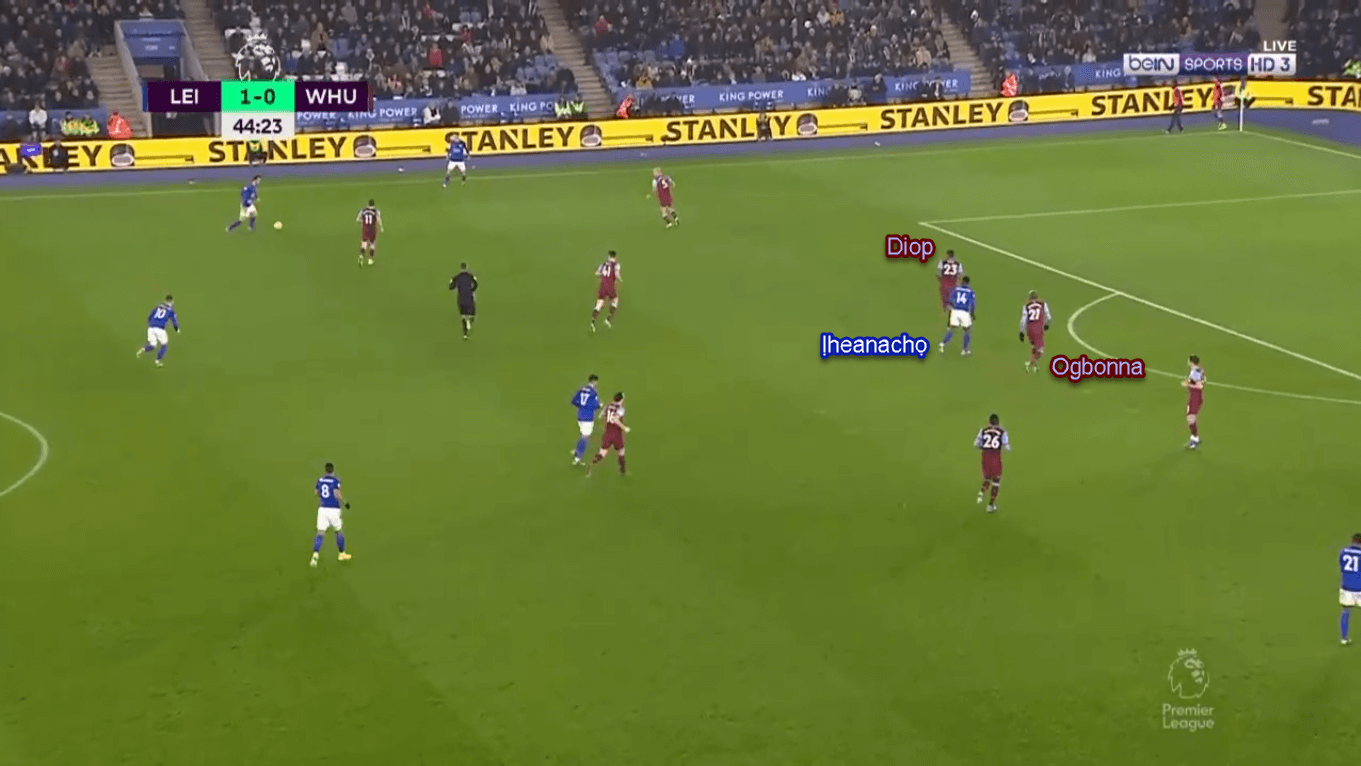
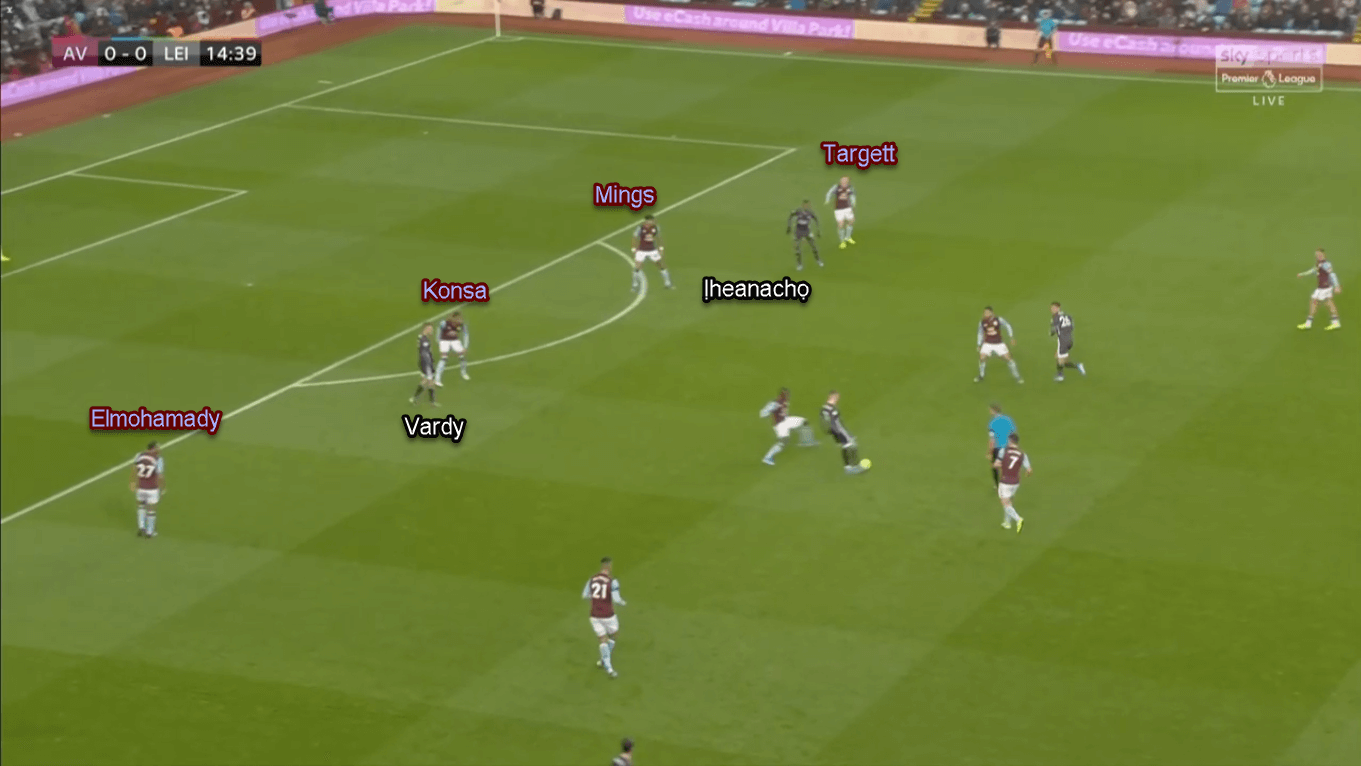
By being the most advanced player in Leicester’s attacks, Ịheanachọ is also tasked with making runs into the goalmouth. The main objective behind this is to use his pace before receiving a final pass there. In the process, he would start his run between the defenders. By standing between them, Ịheanachọ could further confuse the defensive pairing in deciding who would mark him.
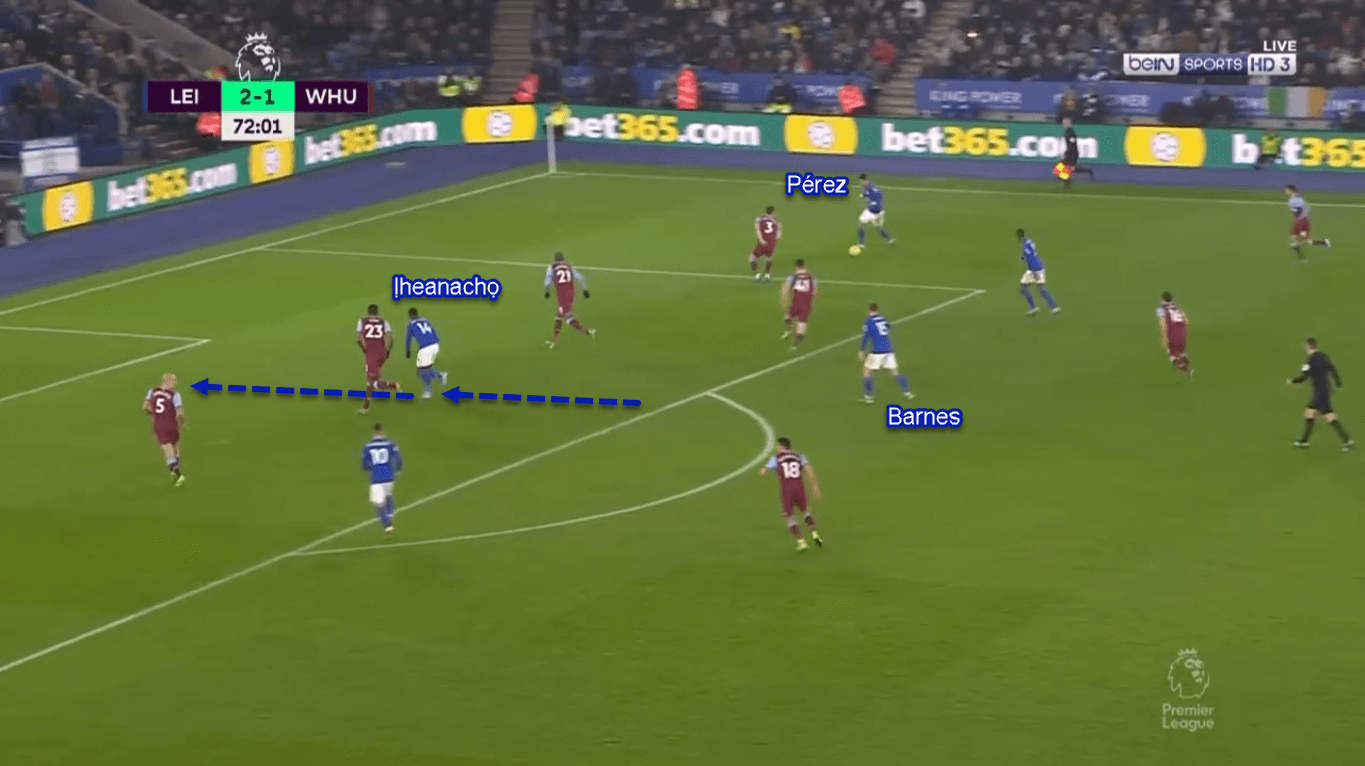
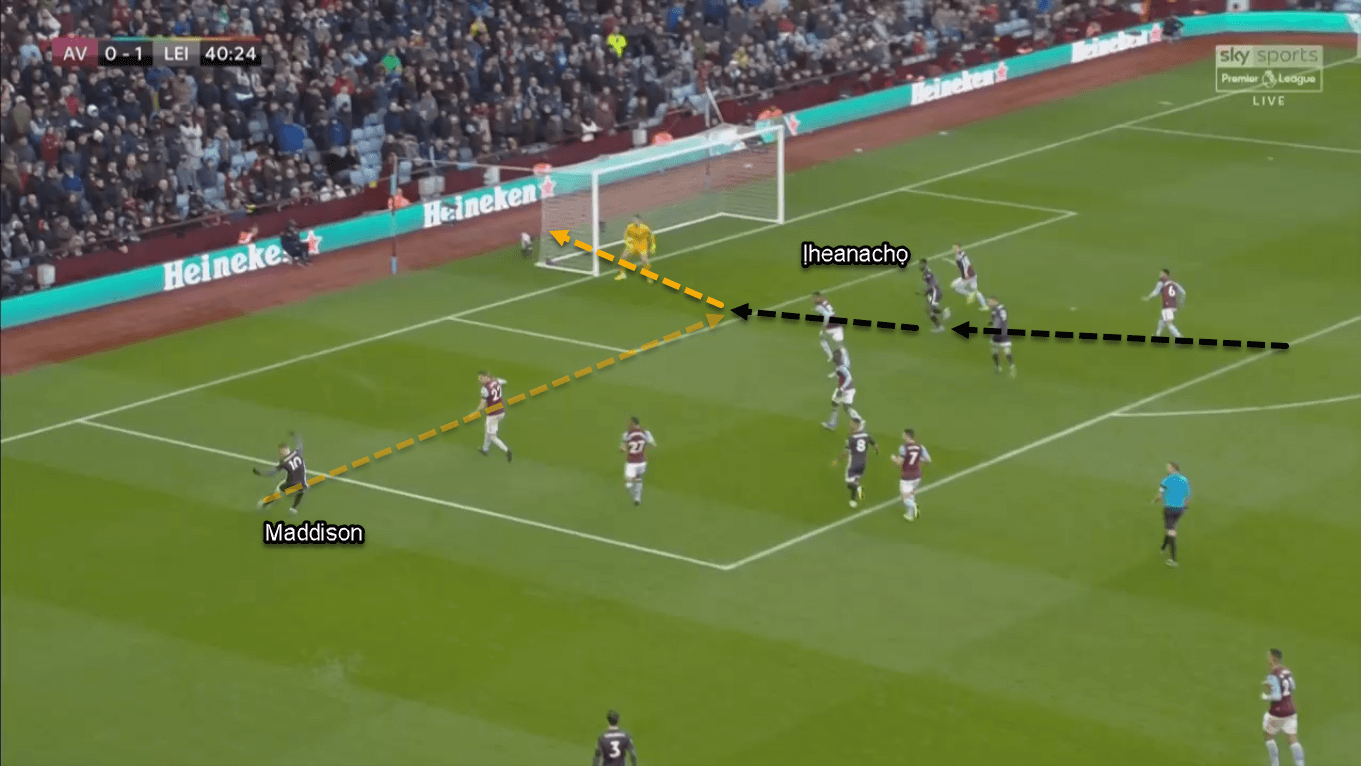
Not only that, but his goalmouth runs can also be useful for his teammates. When he makes those runs, Ịheanachọ would most likely pull the defenders’ focus to him; even simultaneously. By doing so, he would open enough space between the lines for his attacking comrades to roam in. The roaming attacker then could be a potential cutback receiver from his teammate on the flank. Ịheanachọ also possesses enough strength to do this task, as he often holds the defenders with him.
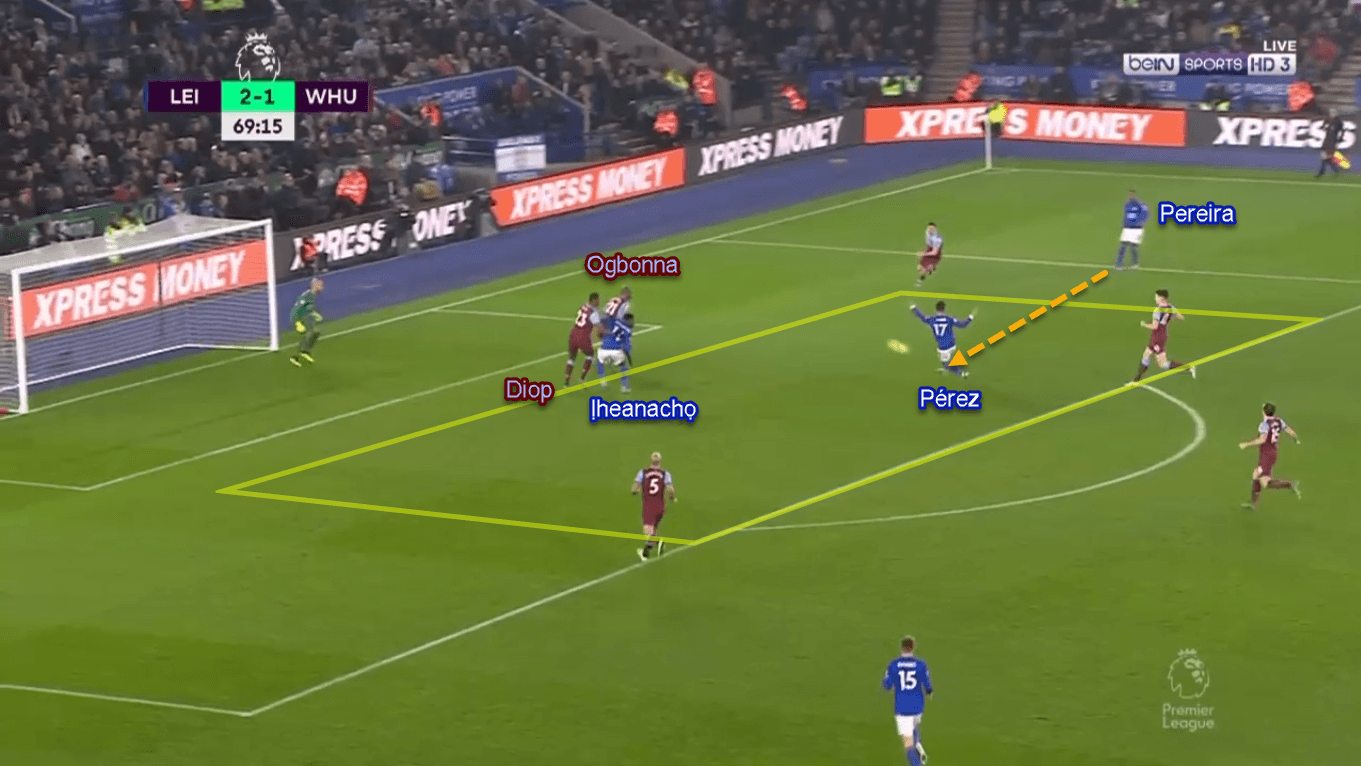
Additional offensive tasks
Rodgers’ instructions for the 23-year-old don’t end there. He would allow Ịheanachọ to move away from his position to offer link-up plays in a certain situation. This is usually when Ịheanachọ has a forward partner, either an attacking midfielder or when he plays together with Vardy upfront. Such situations could be found whenever Leicester moved from their regular 4–1–4–1 to a 4–4–1–1, 4–4–2 diamond, or 4–3–1–2.
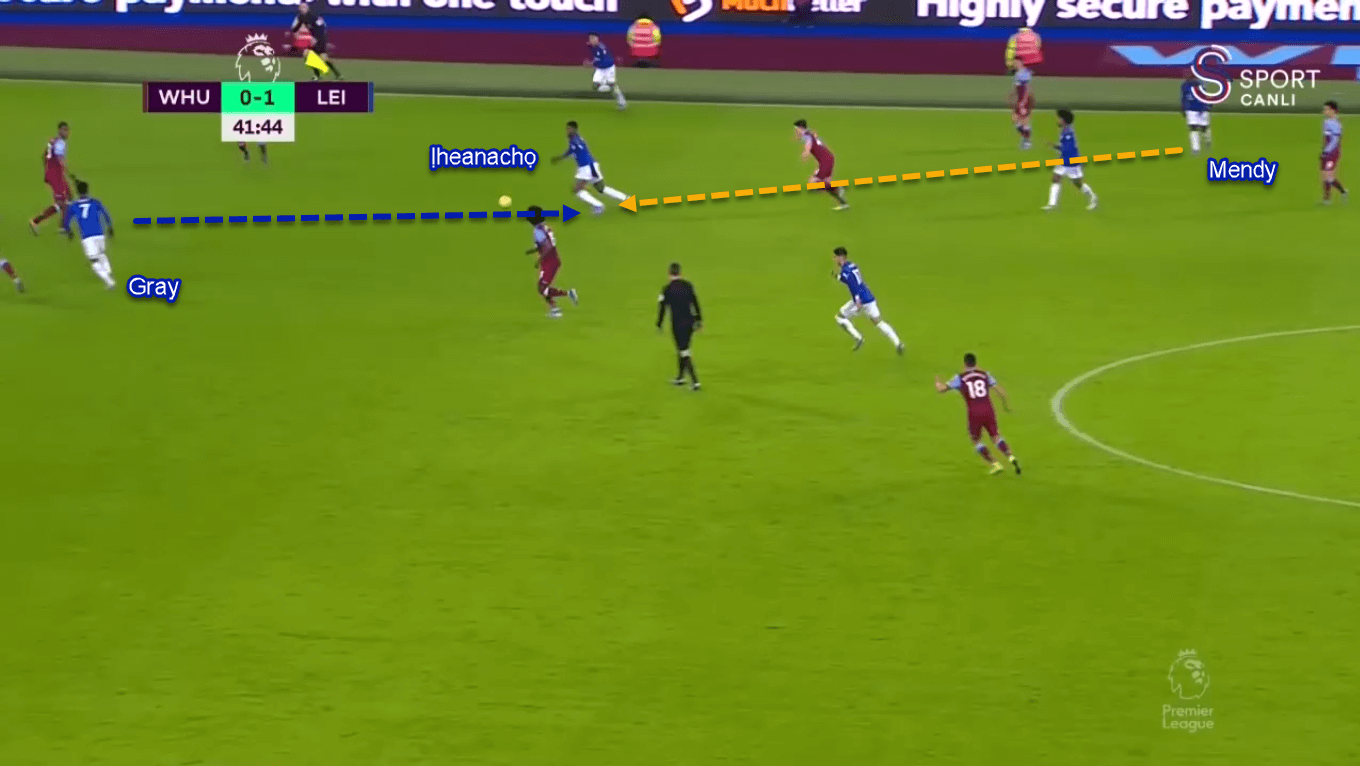
Ịheanachọ would move away from his position in two ways. First, he would drop quite deep alongside his midfield partners. In the process, Ịheanachọ could help his team in building their attacking plays. The Nigerian’s passing ability is more than enough to do the task. Quite often he would provide sharp passes in behind for his marauding teammate. Looking at the statistics, Ịheanachọ averages 1.7 key passes per 90 minutes. That’s the third-highest among all his teammates.
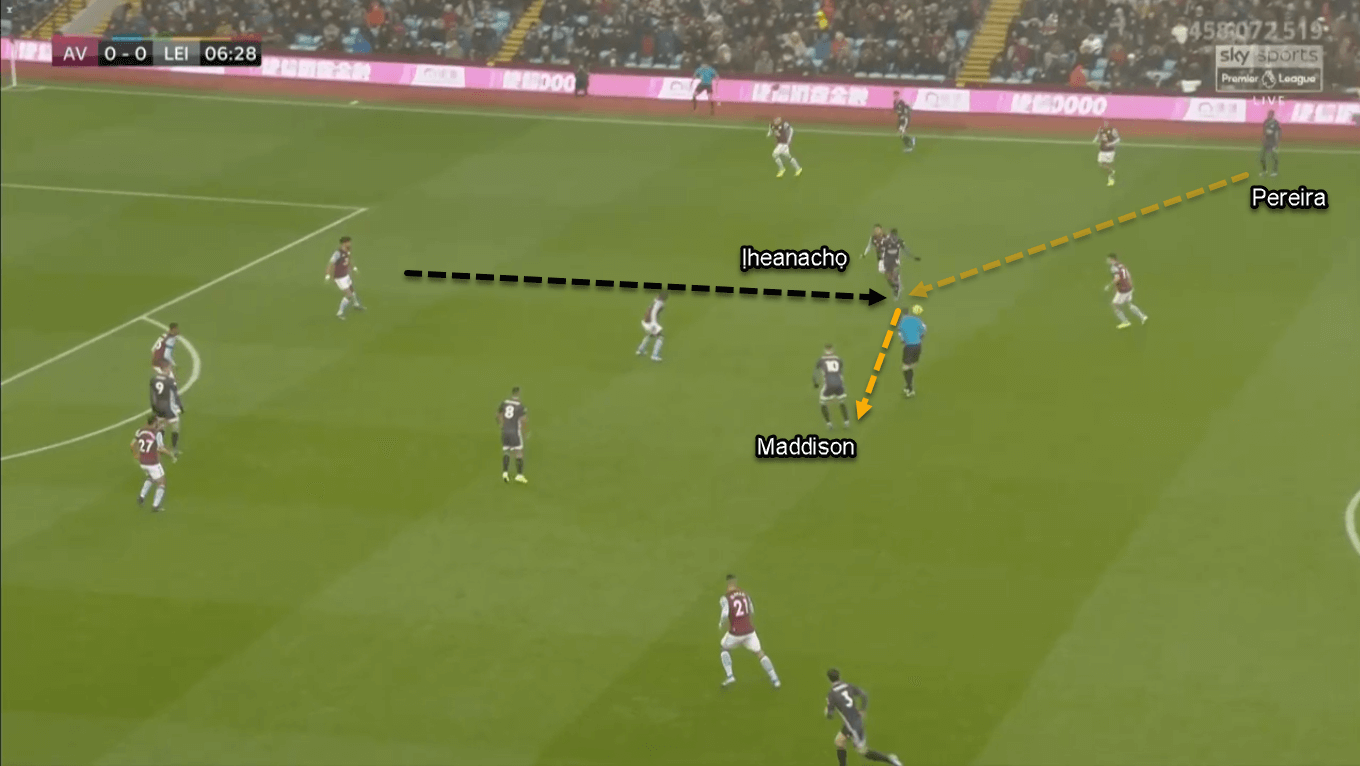
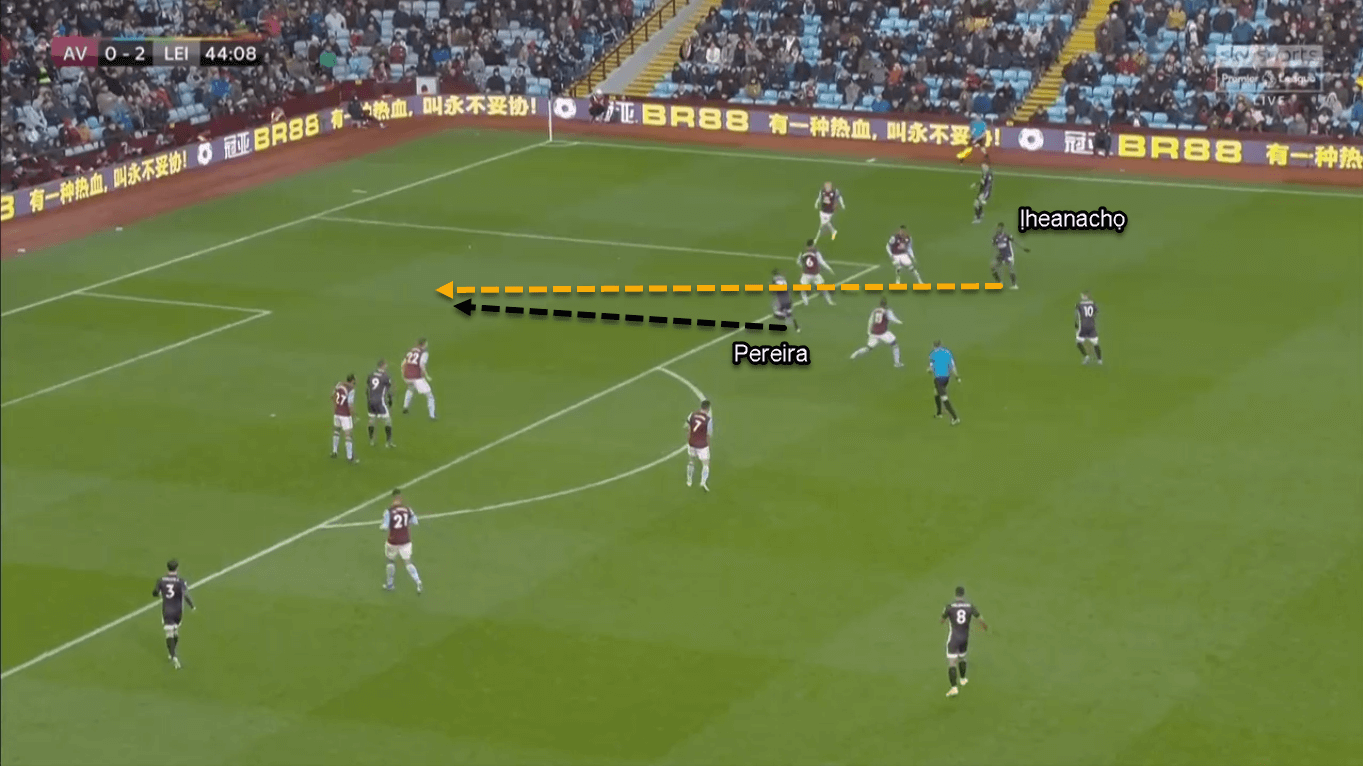
Secondly, Ịheanachọ also likes to drift a bit wide in the final third. By doing so, he would pull a defender to follow his movement. Then, one of his teammates would combine with the youngster before attacking the space Ịheanachọ has left. Such movement is important because Leicester have lots of quick players at their disposal.
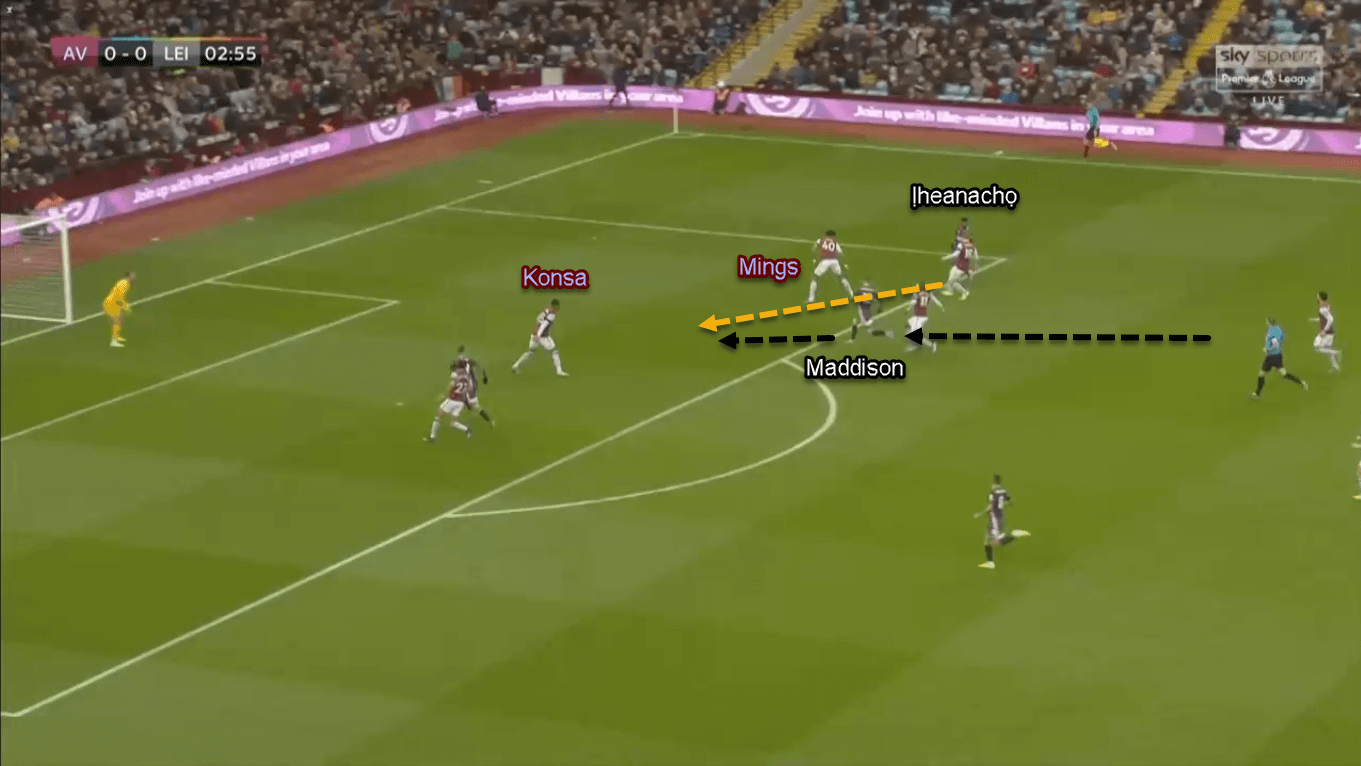
Very quick
Another reason why Ịheanachọ fits like a glove in Leicester’s tactics is his trailblazing pace. It’s no secret that the Foxes have pacey attackers; ranging from Vardy, Harvey Barnes, to Ịheanachọ himself. The particular trait is very handy in transition, as Leicester tend to make their goal-scoring attempts with their counter-attacks. For a fact, the stats show that Rodgers’ men have scored seven goals from their transitional attacks.
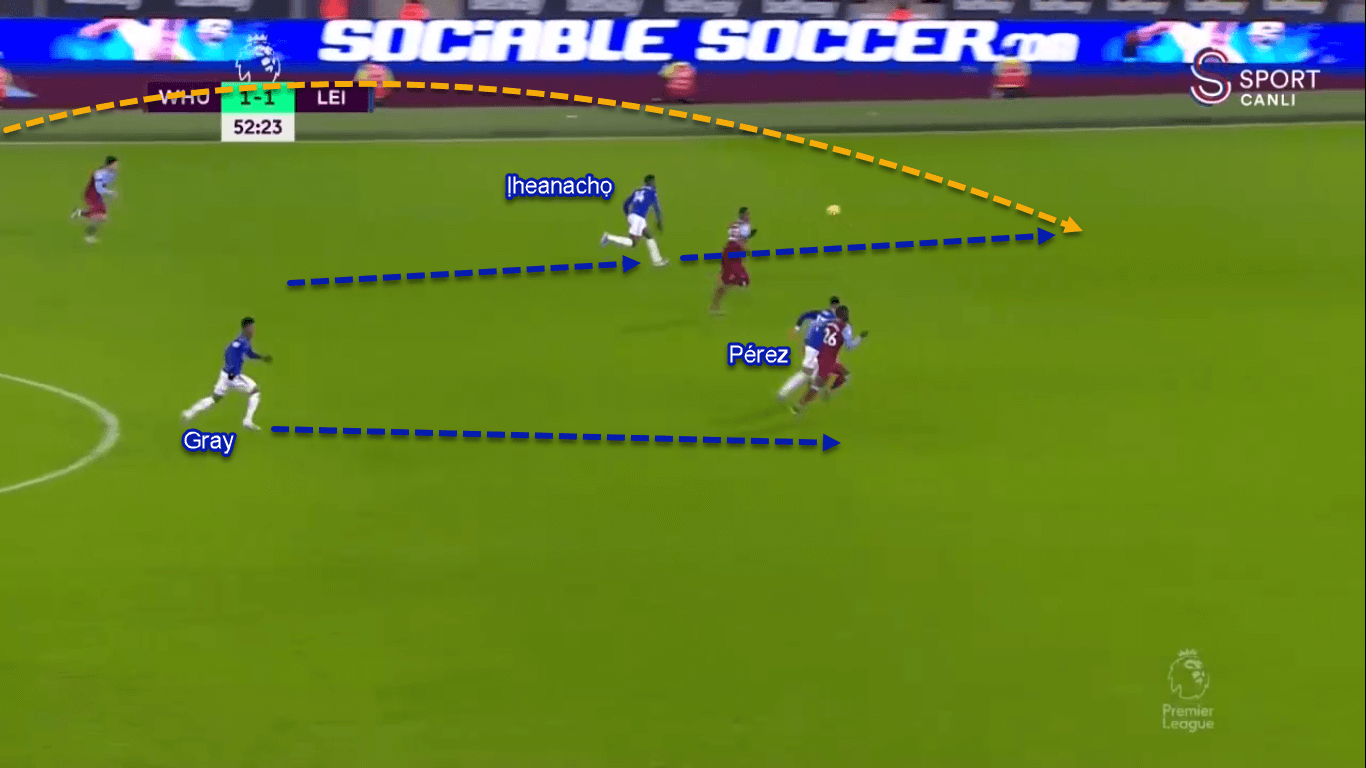
Ịheanachọ’s pace is often used to continue the counter-attacks. Either served with ground-level through-passes or lofted balls, the Nigerian could execute the transition with ease. The Nigerian’s speed is often used in the latter part of the game; hence his cameo role. Even so, the statistics show that he has scored three goals and created three assists when coming from the bench across all competitions.
Ịheanachọ’s speed is also important when he has the ball. On possession, Ịheanachọ tends to use his pace as well as space around him to gets past the defender(s) quickly. In the process, he would rarely use lots of touches as that could make him lose the momentum.
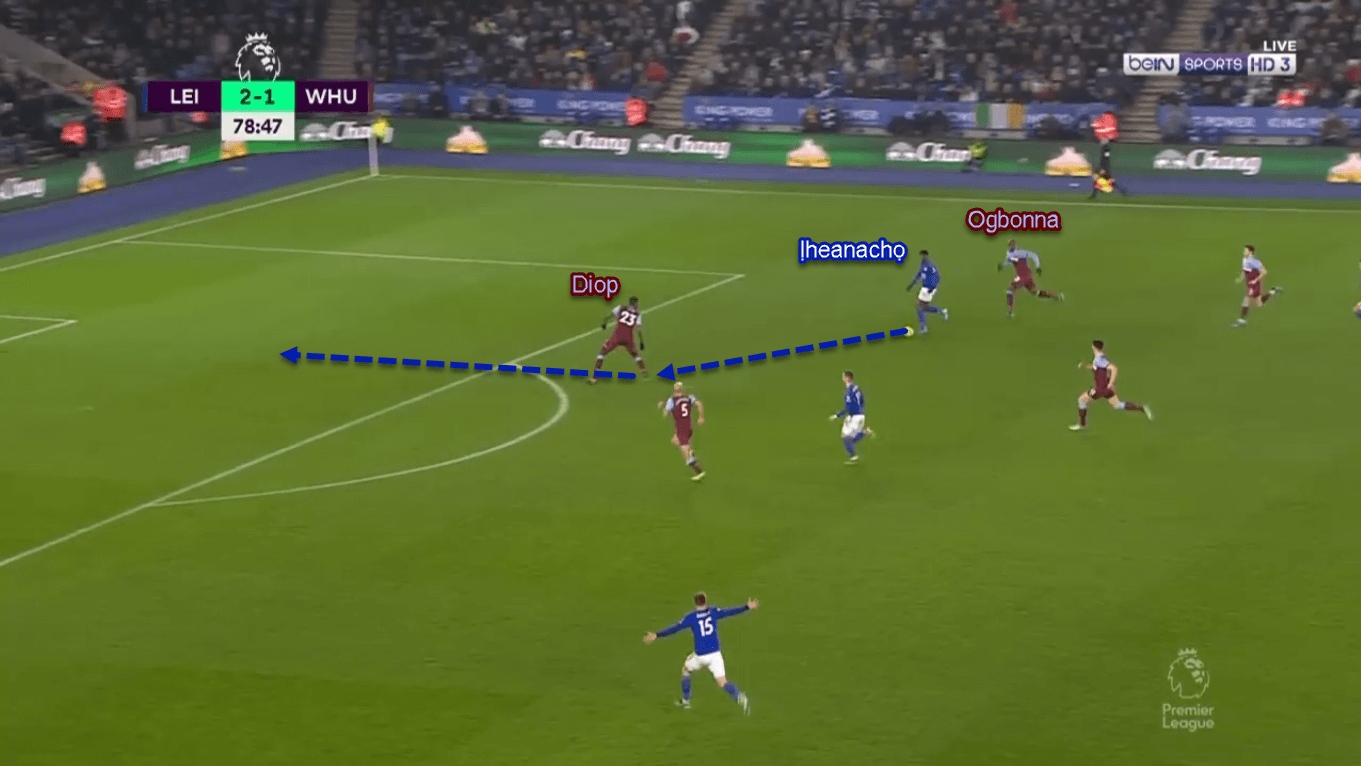
Useful in a more direct approach
Not only in transition, but Ịheanachọ can also be useful when Leicester try a more direct approach. One way to serve him is by sending long passes to the wide areas; either to the half-spaces or the flanks. In the process, Ịheanachọ could use his pace to chase the ball and arrive quicker than his marker. Sending those long passes to wide areas would also prevent Ịheanachọ from being exploited in aerial duels by the centre-backs.
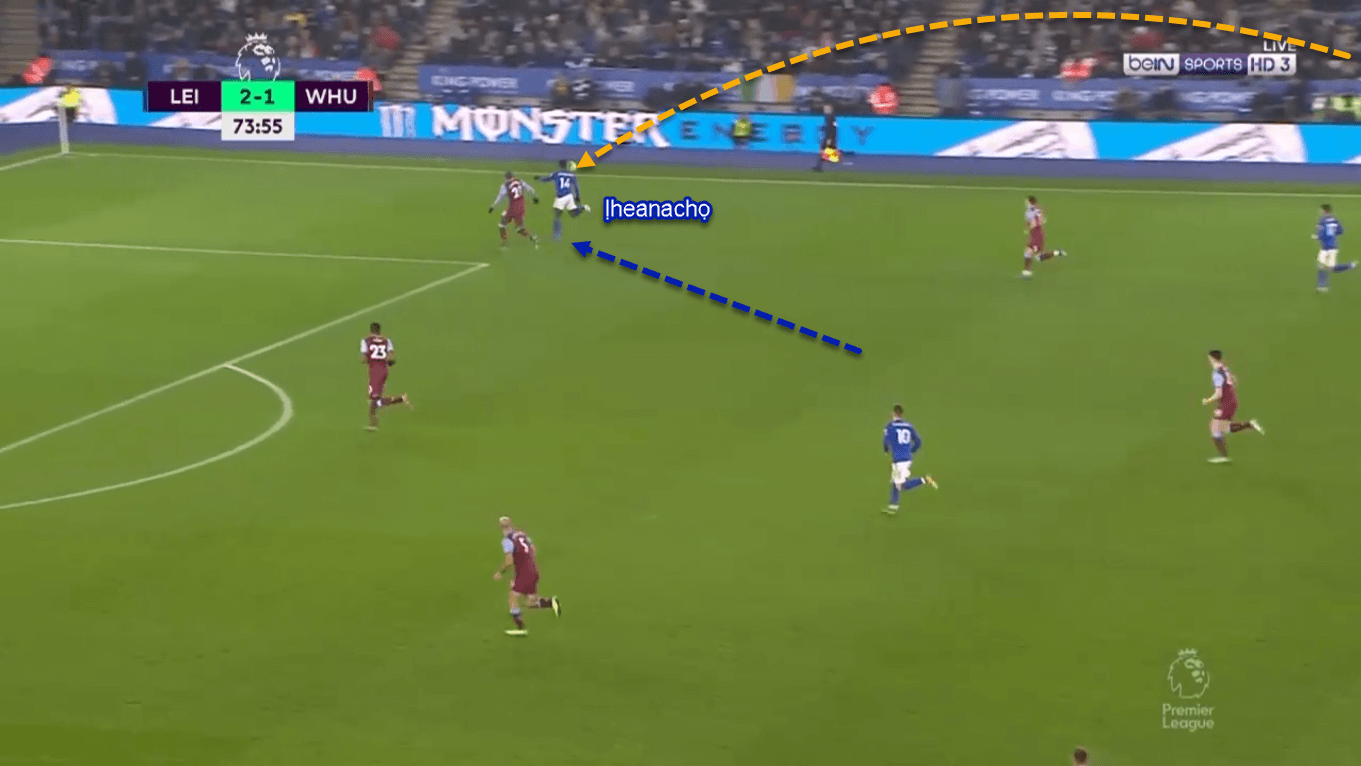
In wide areas, Ịheanachọ would try to hold the ball as long as possible and wait for support to arrive. Standing at 185 centimetres and 82 kilograms, Ịheanachọ has enough upper-body strength to maintain possession. When supporting players finally arrive, Ịheanachọ then could find his teammate(s) with a simple pass to continue the attack.
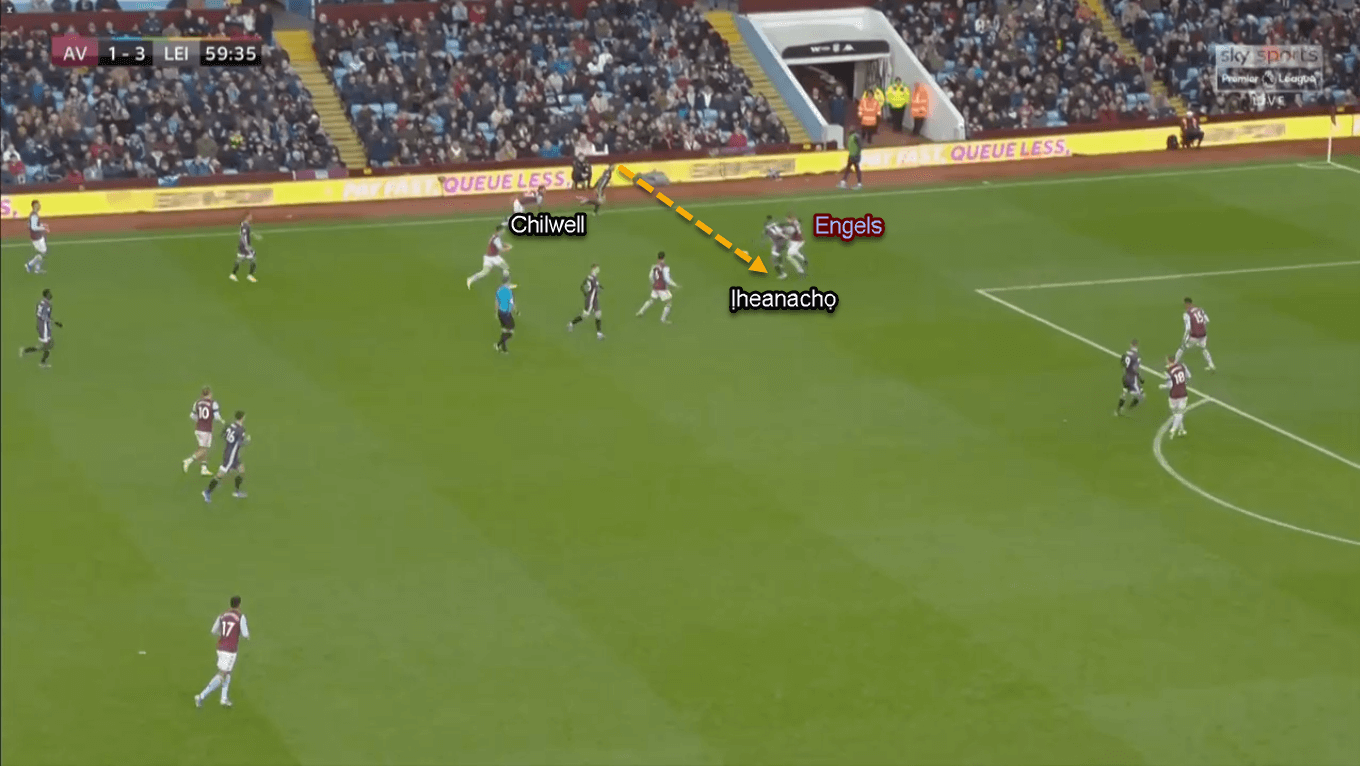
Defensive responsibilities
In this part of the analysis, we’re going to take a look at Ịheanachọ’s defensive duties for his team. In all fairness, Rodgers doesn’t give his attackers lots of defensive tasks, particularly when Leicester are defending deep. When defending in a low block, Rodgers allows his attackers to stay forward. The main objective behind this is to allow Ịheanachọ and Vardy to reserve their energy for counter-attacks.
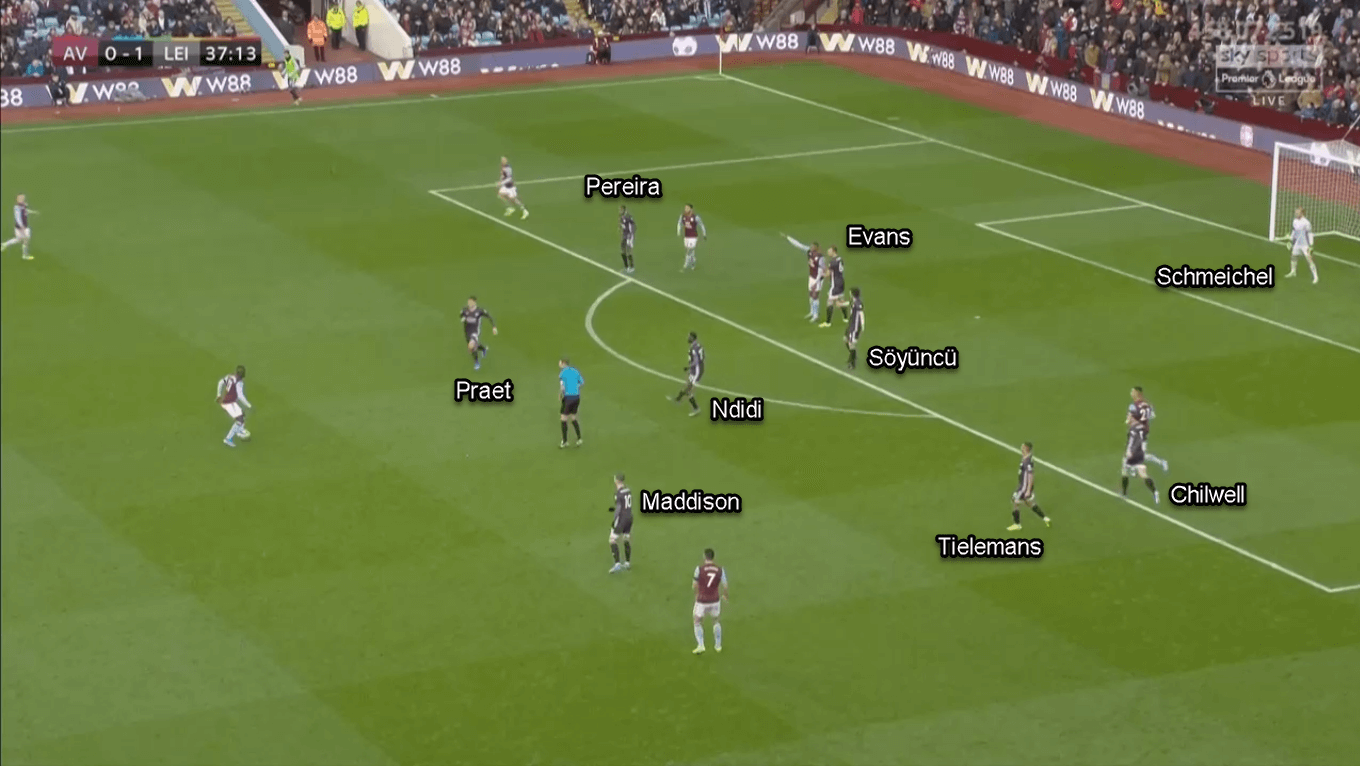
Even so, that doesn’t mean Ịheanachọ has no defensive instructions at all. His main task without the ball is mainly to prevent the opponents from making long back-passes to the goalkeeper from halfway line. To do this, one of his teammates would support Ịheanachọ by pressing the on-ball opponent in the flank. When the rival finally sends a back-pass, then Ịheanachọ would chase the ball and try to steal it. After that, Ịheanachọ would also actively press the opponents’ goalkeeper to force him into making a mistake.
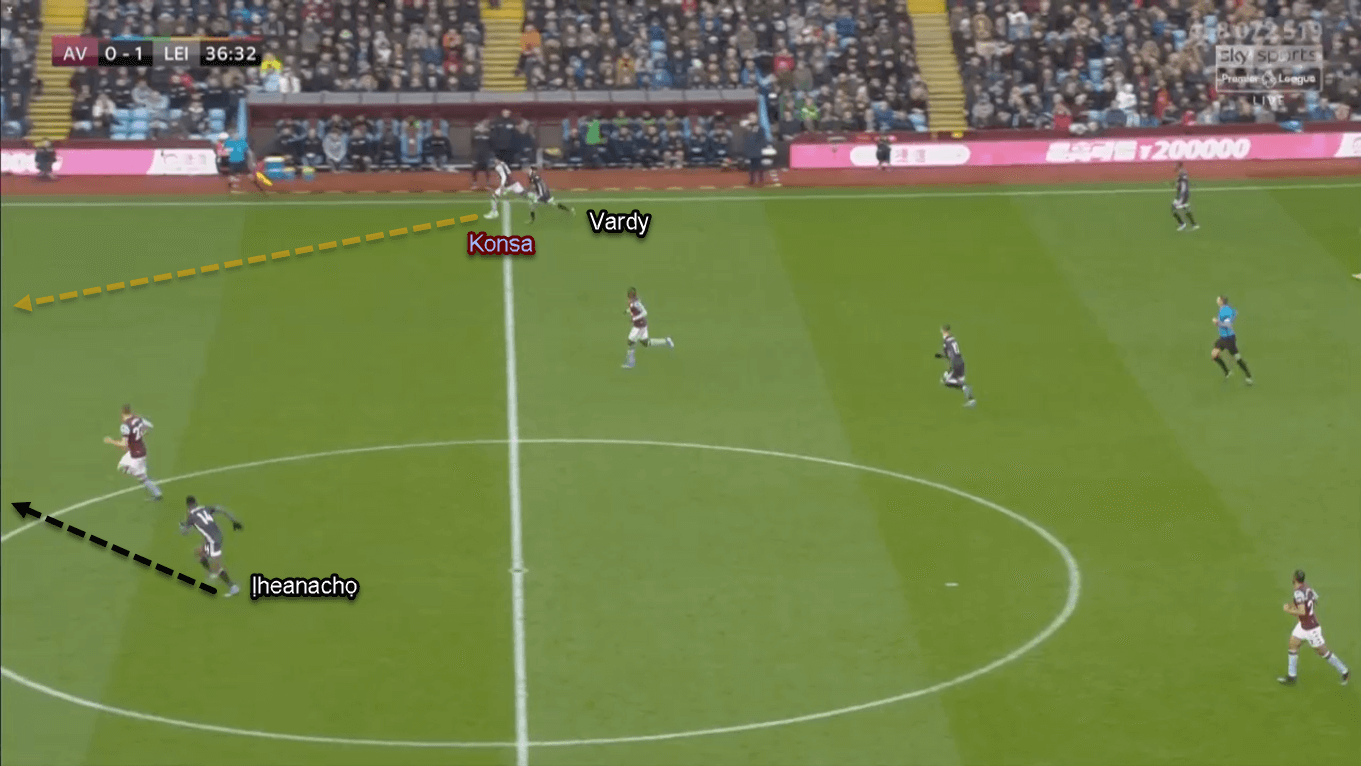
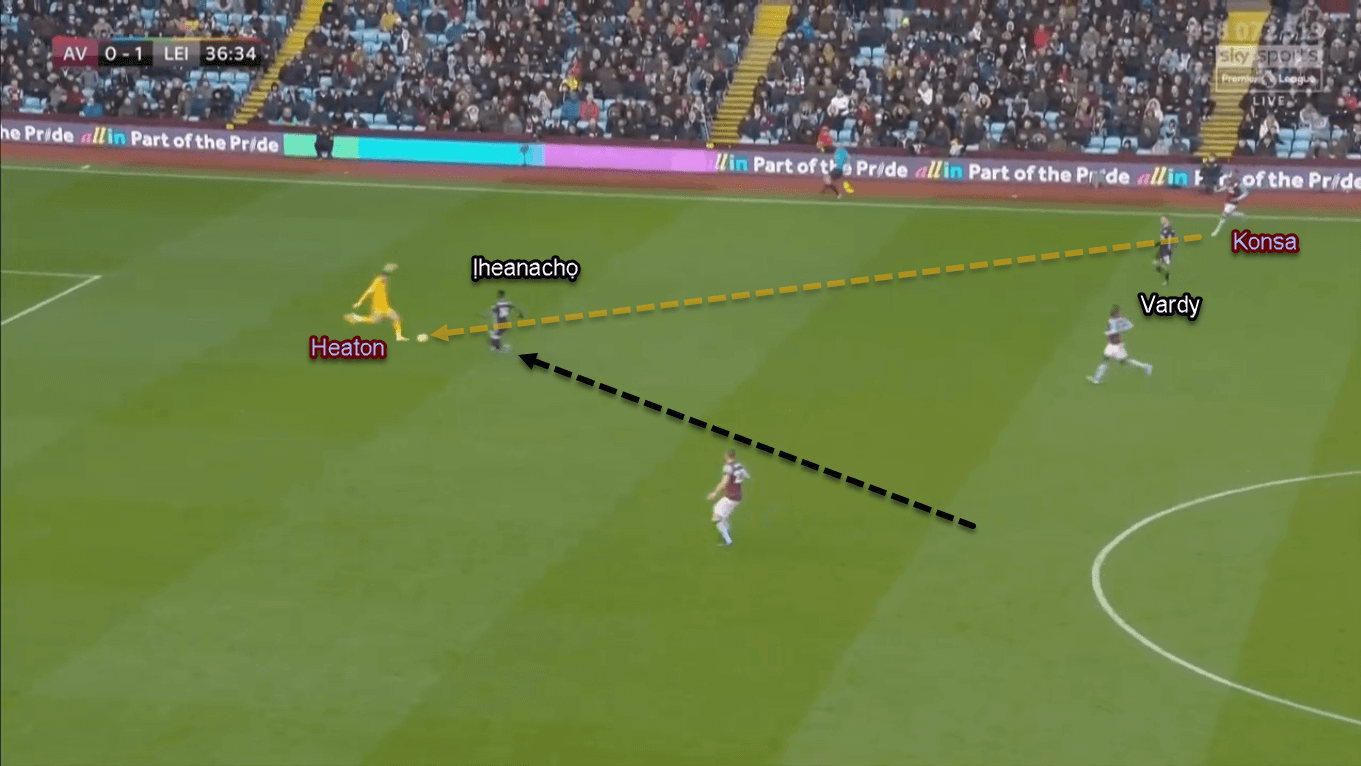
Potential issues
Compared to Vardy, Ịheanachọ has one big issue – his movement off the ball in the final third. Quite often, Ịheanachọ stays in his spot rather than actively making curved runs or making last-second sharp turns to get away from the defender’s eyesight.
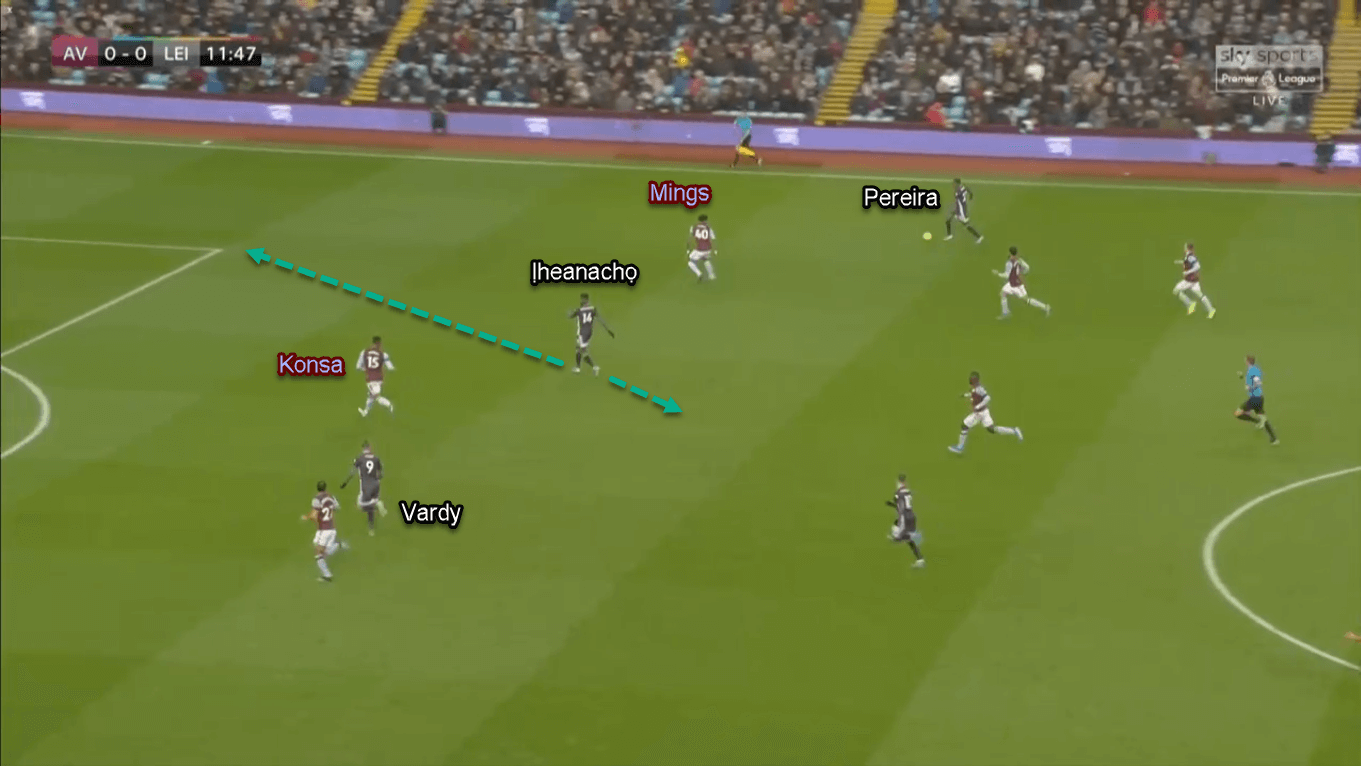
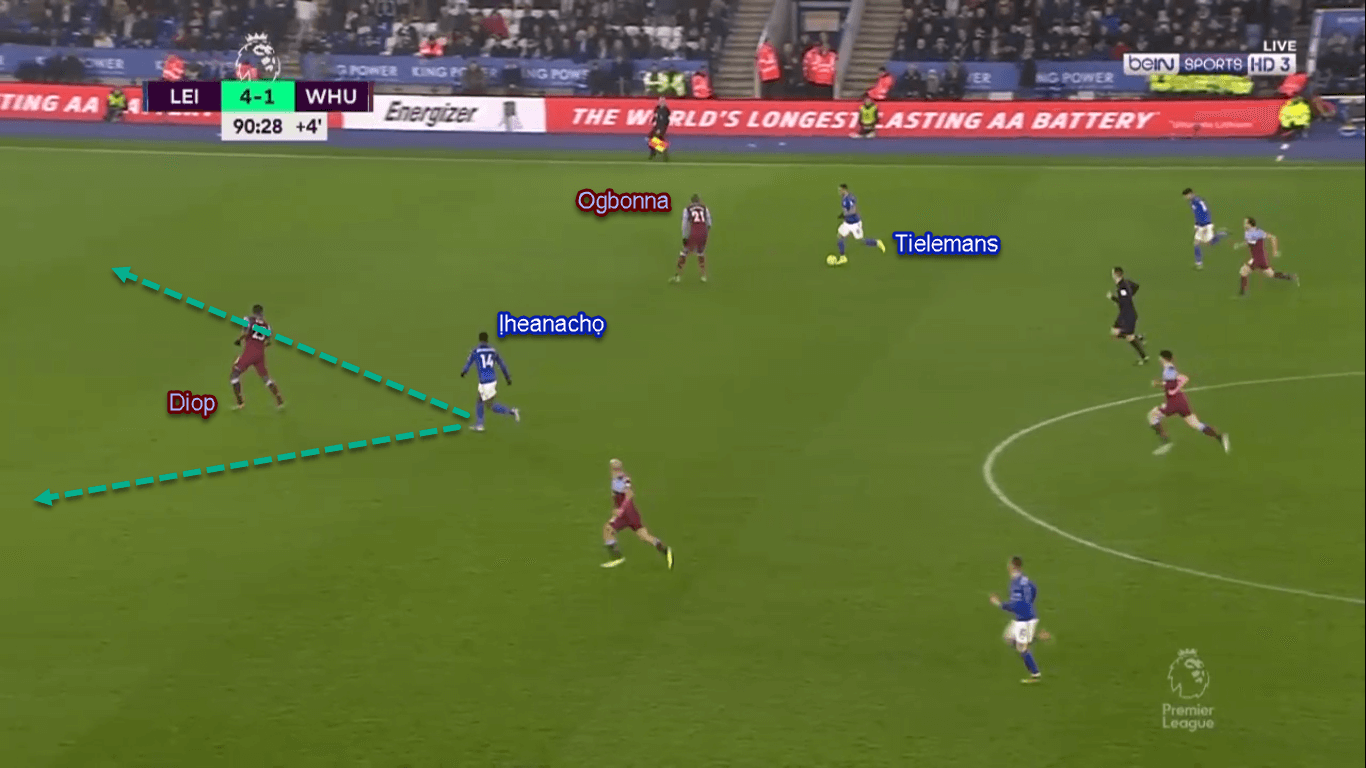
Not only that, but Ịheanachọ also can be found hesitating to make penetrating runs. This decision-making issue sometimes prevents him from being a dangerous threat in the final third; even in transition. His teammates could also be confused whether to make a pass to him or not; thus making them losing possession later. The issue doesn’t stop there. His hesitation would also make Ịheanachọ’s actions more predictable for the opponents.
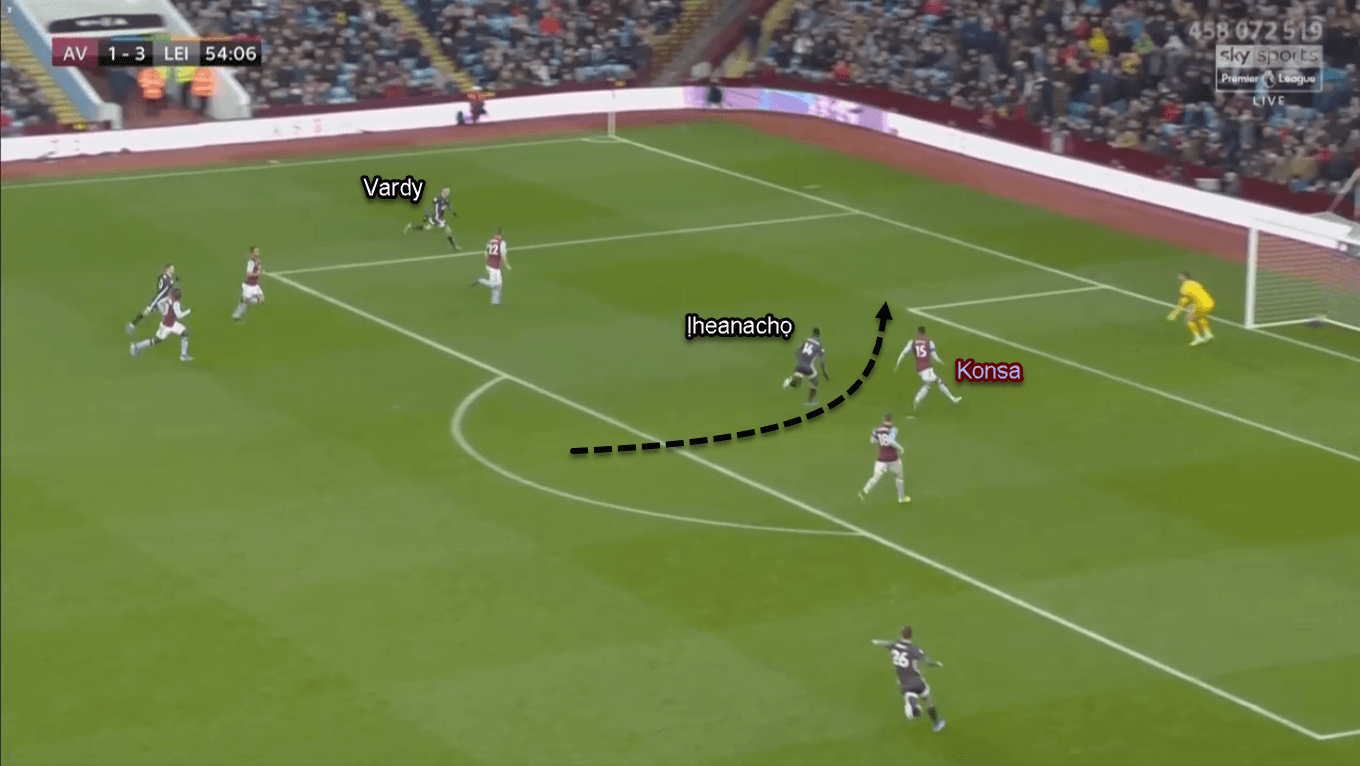
Another issue in Ịheanachọ’s game is his lack of aerial prowess. Standing at 185 centimetres, the Nigerian is Leicester’ joint-fifth tallest player this season. Even with the same height as Çaglar Söyüncü, Ịheanachọ lacks quality in the air. The stats show that Ịheanachọ has involved in 3.1 aerial duels per 90 minutes. Yet, he has only won 0.3 (9.67%) of those duels.
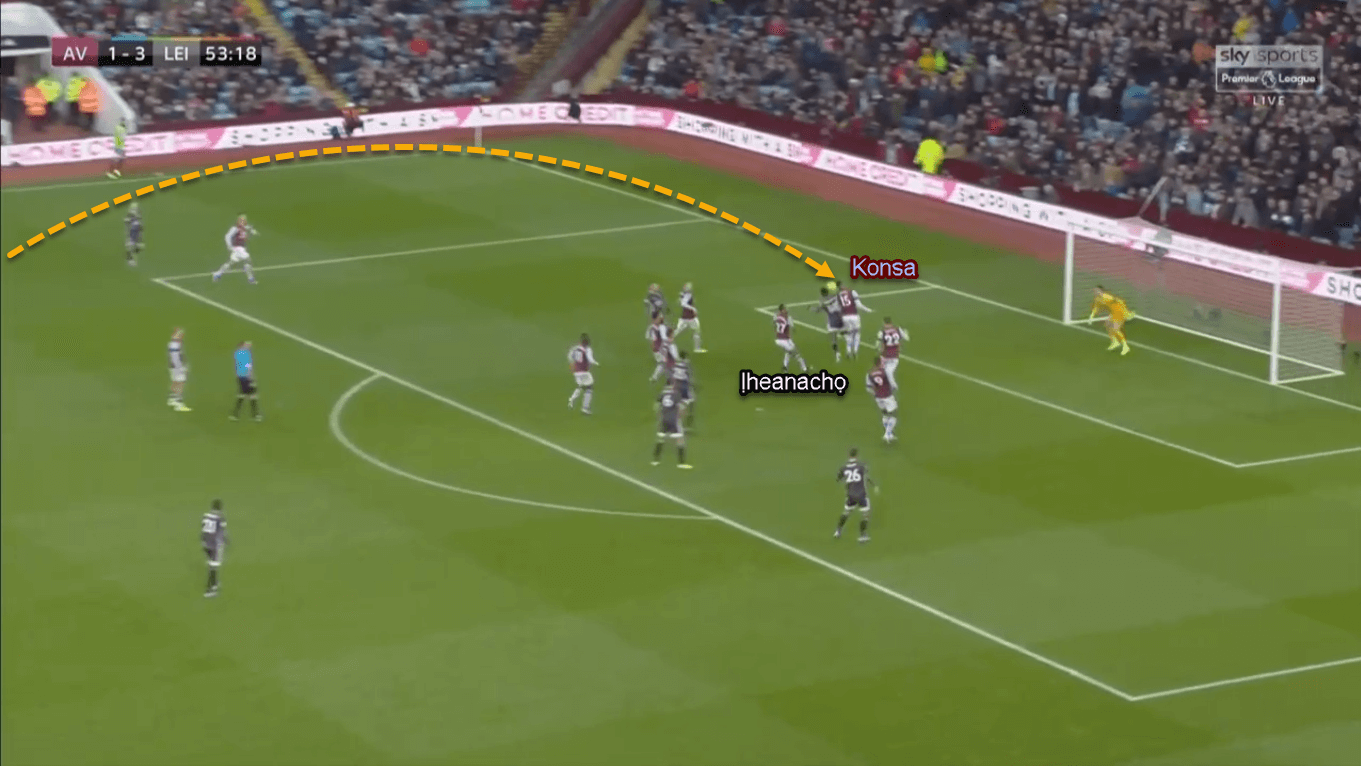
Conclusion
The promising 23-year-old forward is very enjoyable to watch. His explosive speed, as well as his superb vision, are the main reason behind that argument. Despite only being second fiddle to Vardy so far, Ịheanachọ has repaid Rodgers’ trust with brilliant performances, especially from the bench. Such dedication and selflessness is always a good sign for a young attacker.
However, the manager’s tendency to bench him is quite reasonable. Ịheanachọ still has a lot to add to his game, particularly his decision-making and movement in the final third. However, with a world-class striker as his mentor, there’s no reason for Ịheanachọ to not develop his game.




Comments